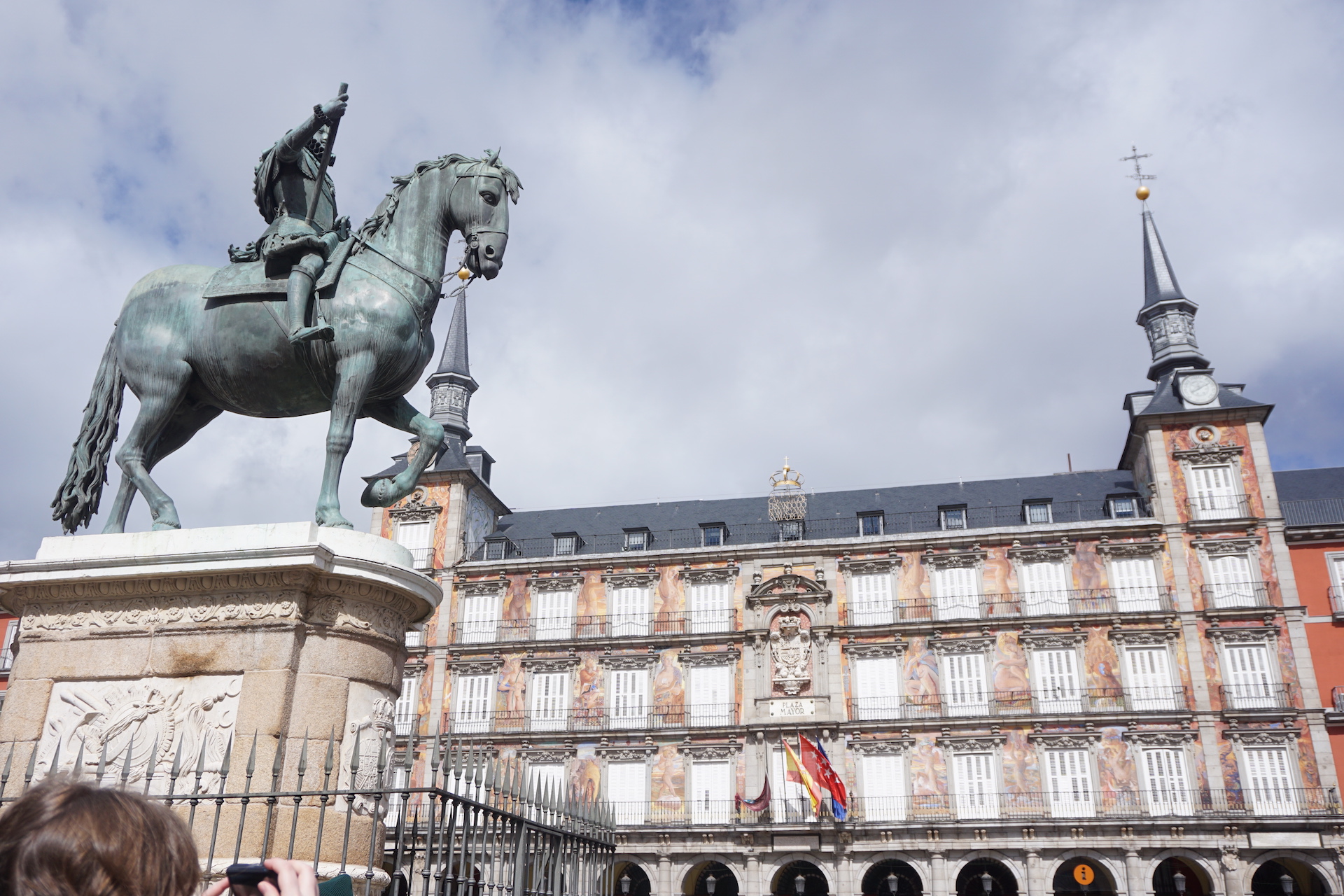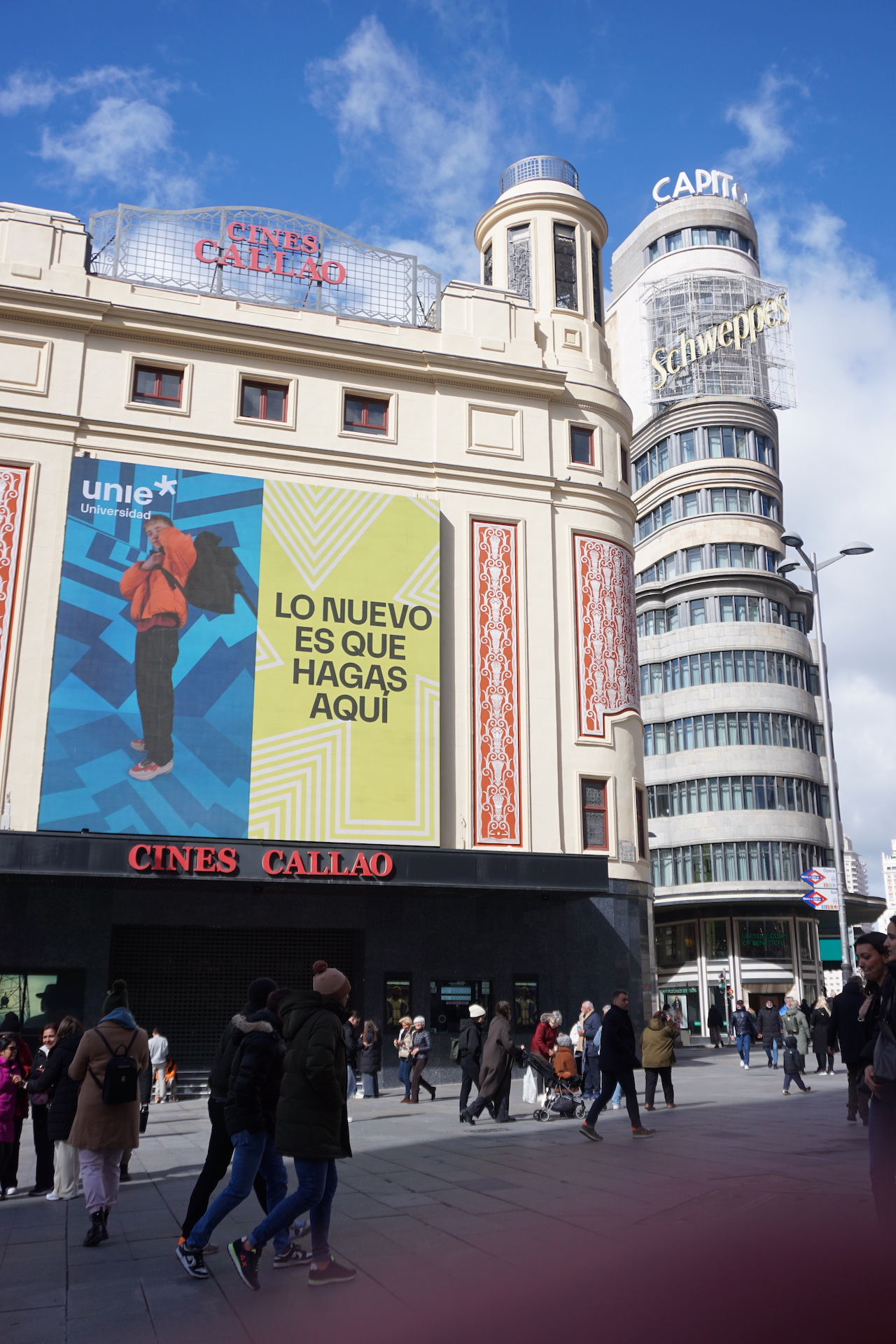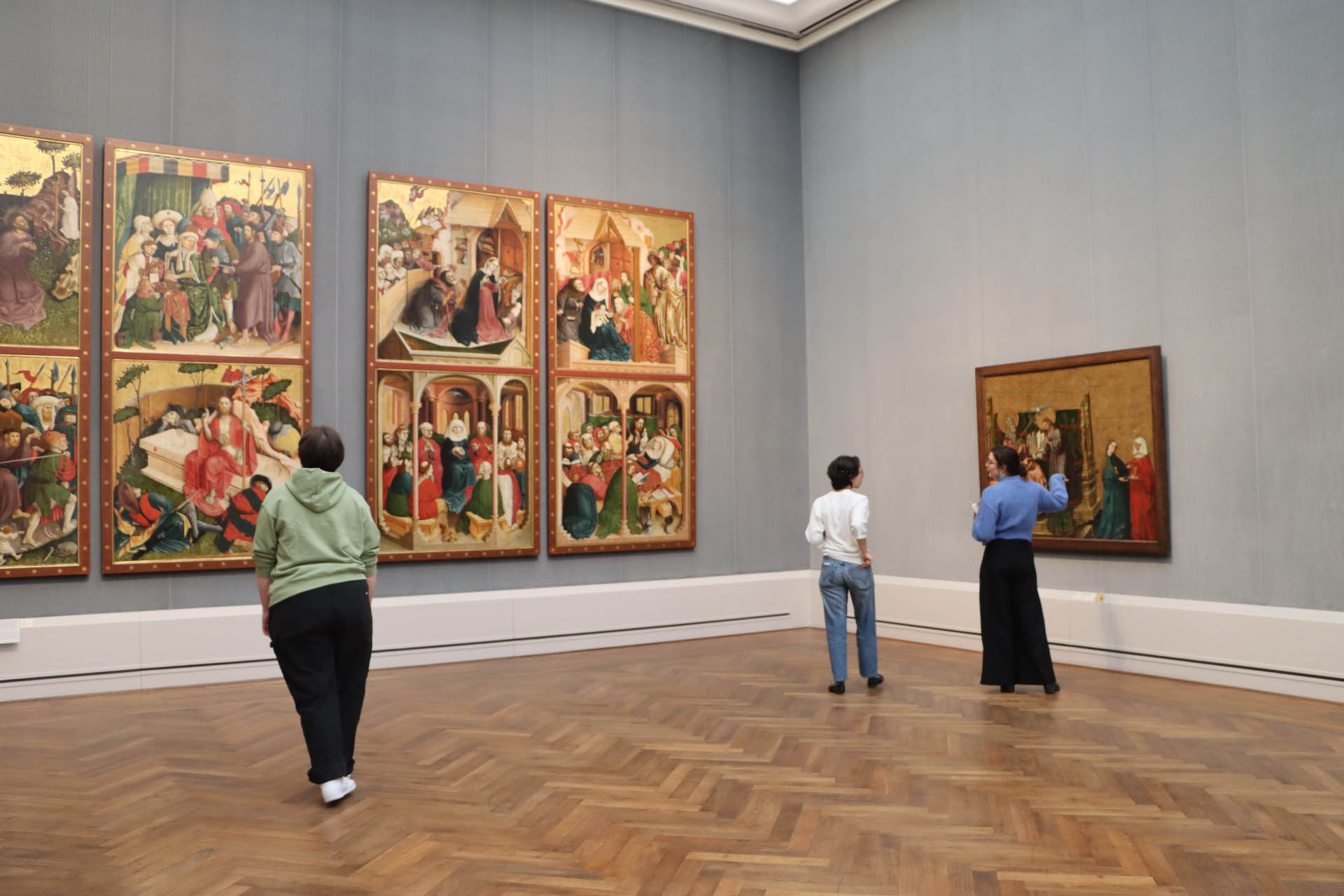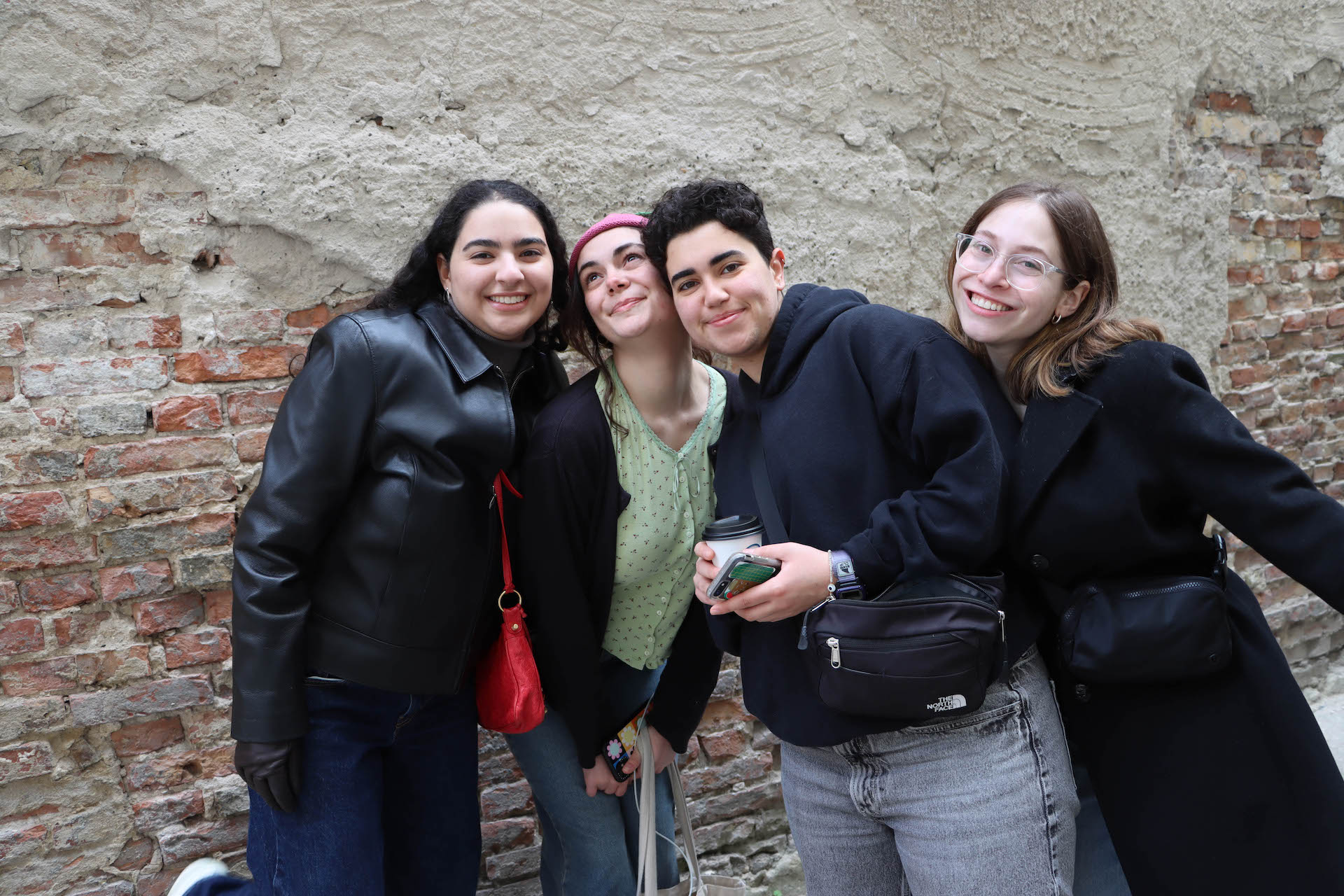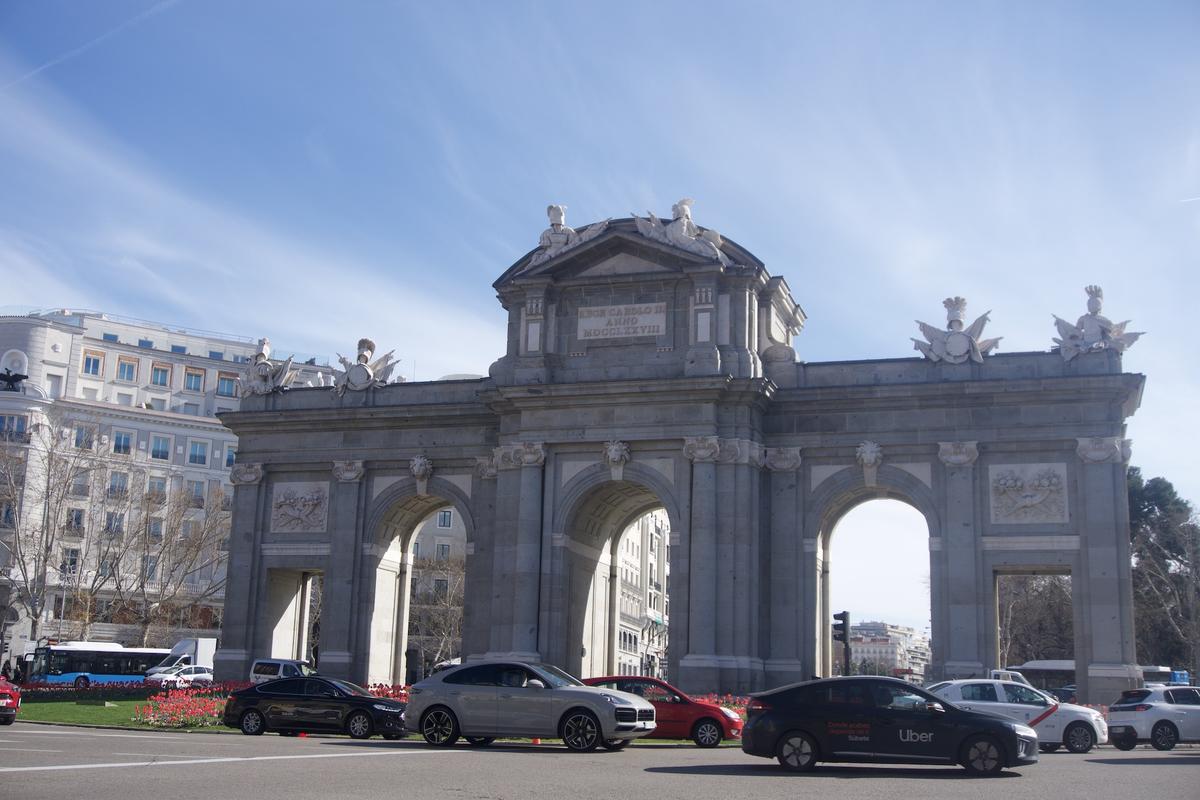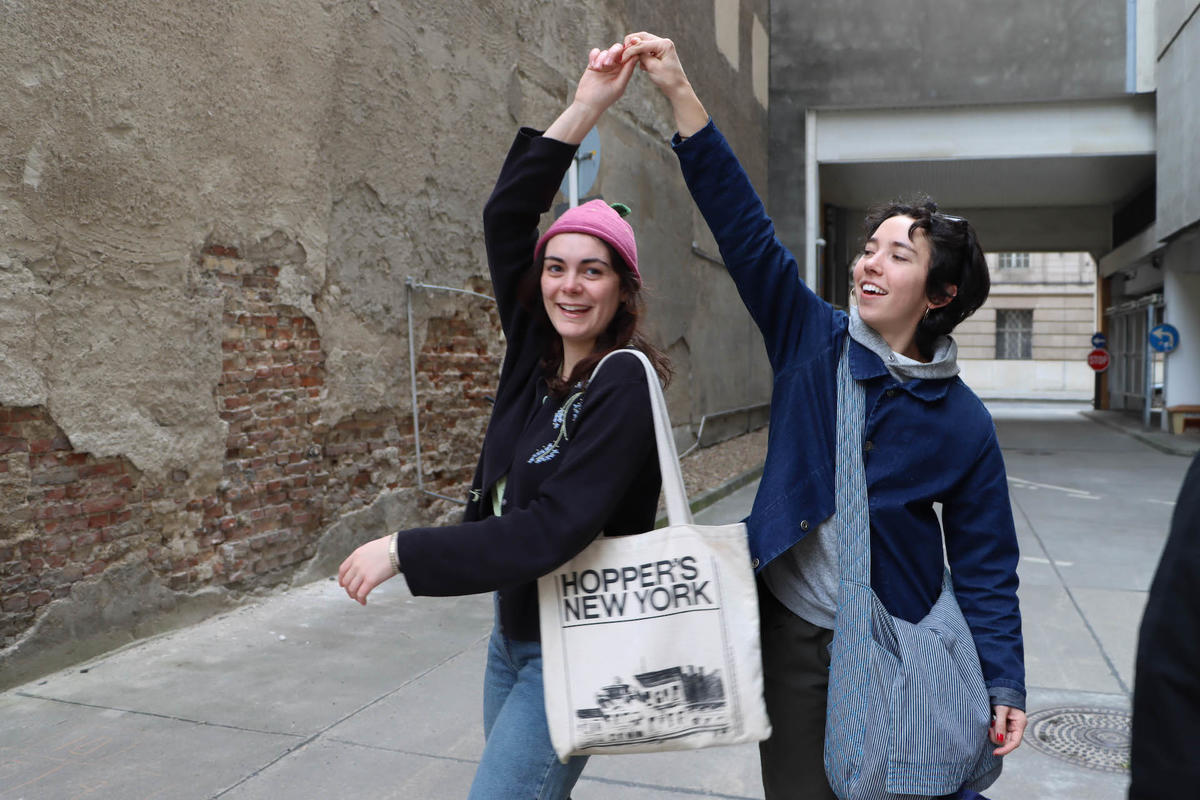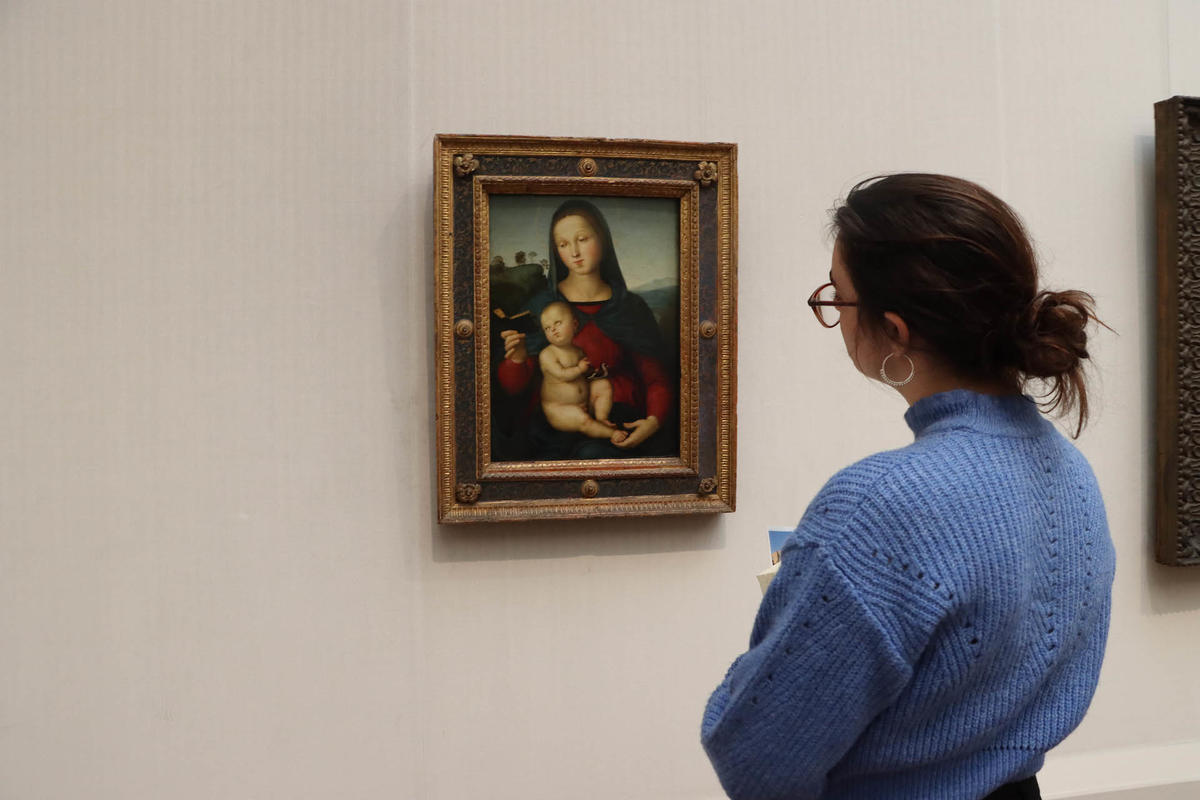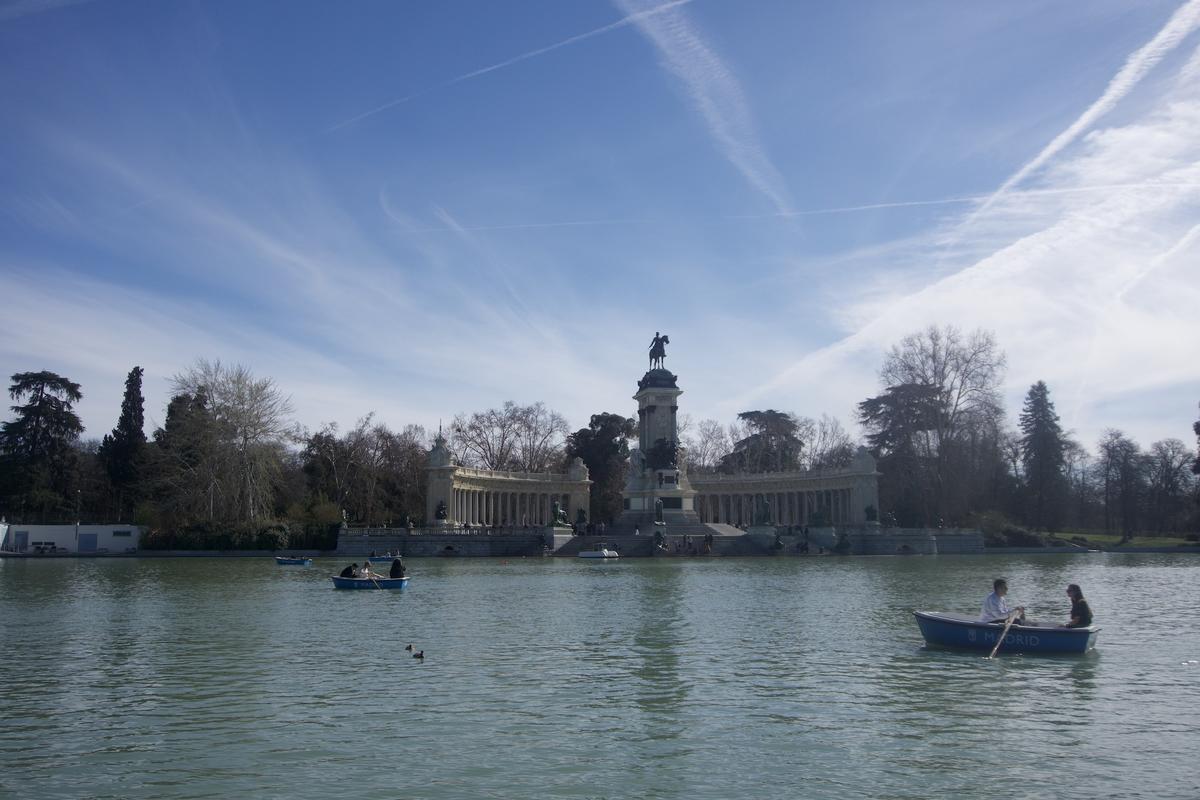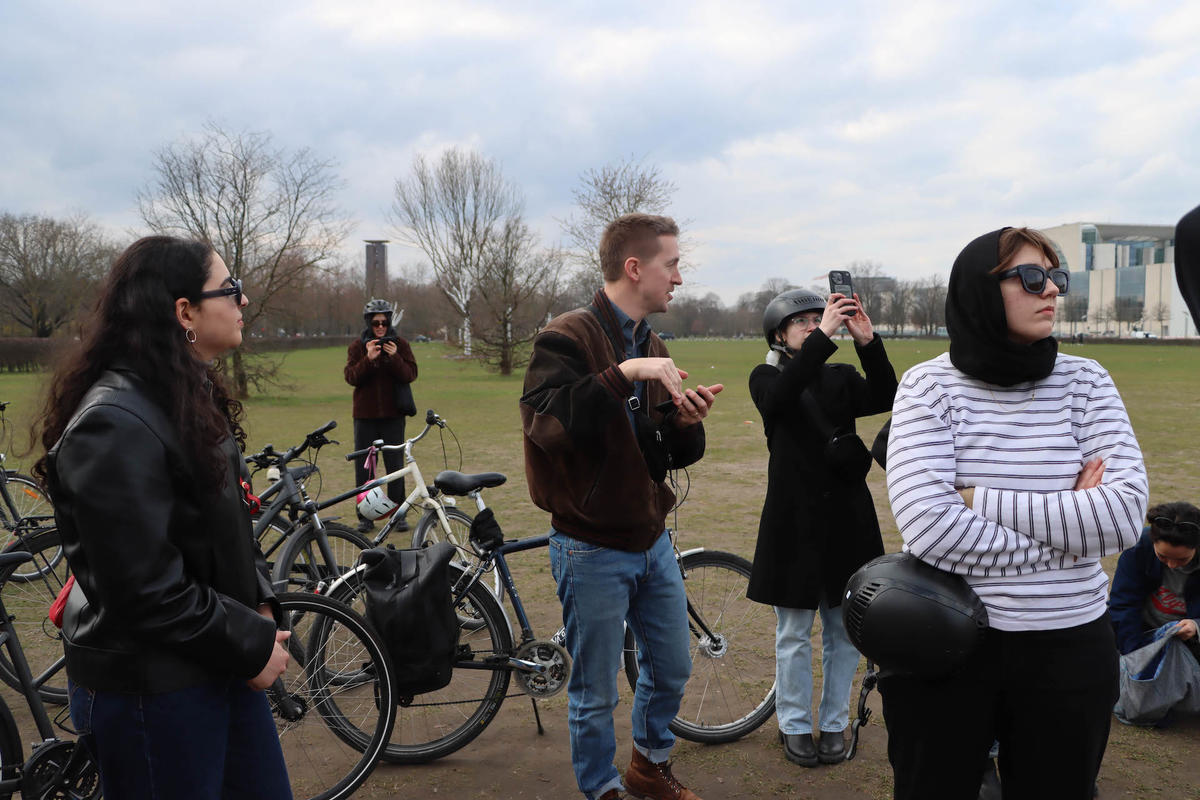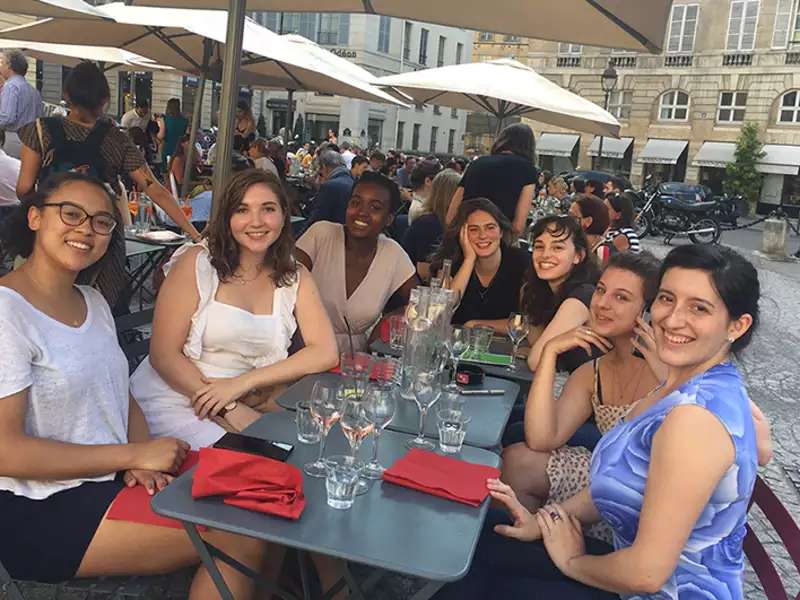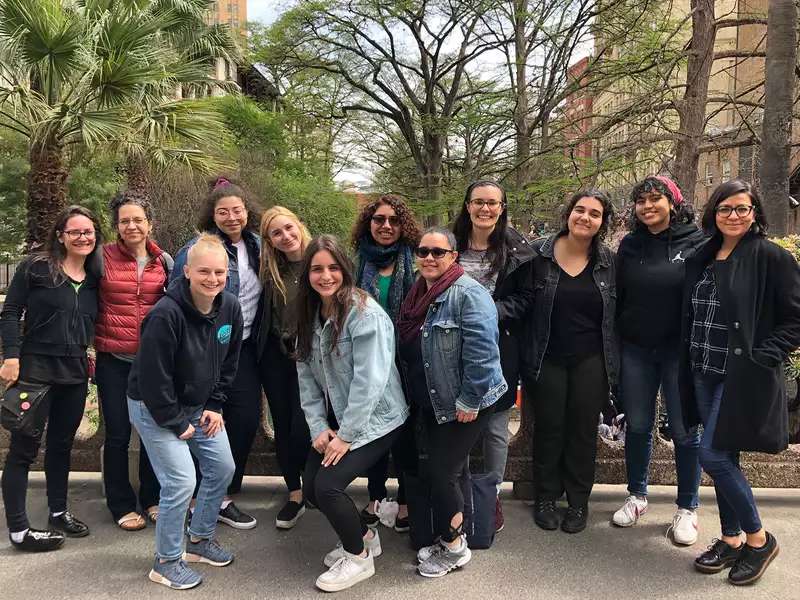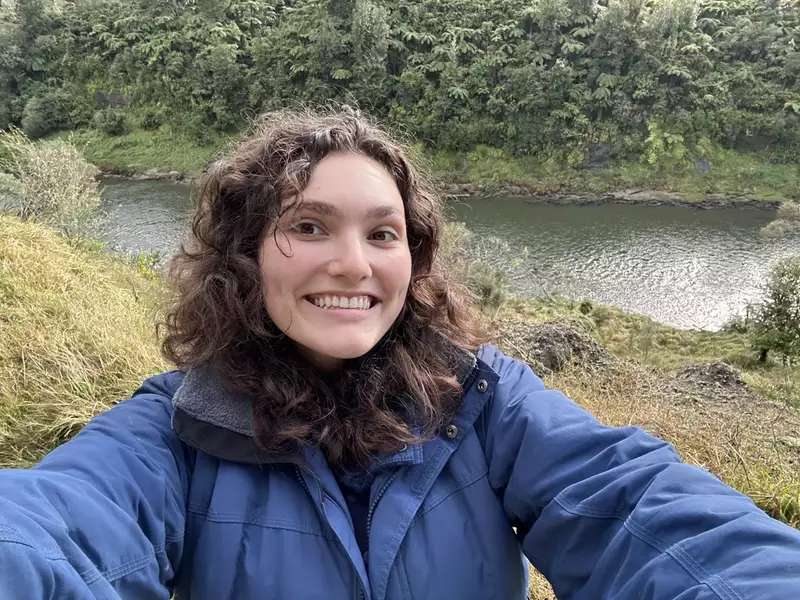As part of Barnard’s canvas of study-abroad opportunities spread out over 65 countries, many professors take advantage of spring break to offer culturally immersive experiences to their students and to engage with a global learning community beyond the classroom.
This March, faculty led 30 students — 18 to Berlin and 12 to Madrid — as they traveled in keeping with the College’s “tradition of place-based learning,” according to Giorgio DiMauro, Dean for International and Global Strategy. “[The College] has always used New York as an extension of the classroom, and enterprising faculty have taken that same spirit of applied learning abroad to such cities as Berlin, Paris, Madrid, Quito, and Nairobi."
Barnard’s Javier Perez-Zapatero and Columbia’s Francisco Rosales-Varo collaborated to lead the 10-day Barnard LGBT+ Madrid trip for students who have taken advanced Spanish, beginning on March 8. The following week, Barnard professors Joan Snitzer and John Miller traveled to Berlin with a group of students, most of whom are in their senior year as art and art history majors, as part of the Visual Art Student Trip to Berlin.
"The ability to travel the world is always a tremendous privilege on its own, but doing so within a group of students and educators that share the same interests and passions allowed me to connect in ways that felt very personal and exciting," said Orlie May White '24, an art major who traveled to Berlin.
From bike tours with art history professors and visits to the Kunst-Werke Institute for Contemporary Art to exploring Madrid’s queer archives at Museo del Prado, the activities on these two trips gave students access to historical landmarks and a network of international experts.
Barnard LGBT+ Madrid (March 8-17)
The partnership between Perez-Zapatero, senior associate in Spanish and Latin American Cultures at Barnard, and Rosales-Varo, senior lecturer of Spanish in the Department of Latin American and Iberian Cultures at Columbia, demonstrates how the connection between the two institutions exists beyond borders to introduce students to global and cultural epicenters, such as Madrid.
“The course’s primary objective is to encourage critical reflection on diversity by reviewing different identity categories, such as gender, sex, sexual orientation, race, ethnicity, nationality, and class, from an intersectional perspective,” said Rosales-Varo.
From its conception in 2019, the program has functioned as a means of testing students’ ability to engage with locals in Spanish and as a way to explore LGBTQ+ history within a global framework, while reinforcing the themes explored within both a traditional Spanish course and one sharpened by a focus on LGBTQ+ history in Spain.
“The LGBT+ Madrid program was an extremely valuable experience, both culturally and academically, that was a pleasure to share with such a diverse group of students," said Merielen Espino '26, a political science and comparative literature double-major. "Despite its short length, we had the opportunity to immerse ourselves in the culture and LGBT+ community of Madrid through many amazing opportunities."
Over the course of nine days, students visited Spanish landmarks — including the Centro de Arte Reina Sofía — and local bookstores known for LGBTQ+ publications, staying in tune with the trip’s objective to “to discover the coordinates of the historical space and time where the LGBTQ+ identity has been shaped and developed in Spain,” according to Perez-Zapatero.
As part of the program, students worked with LGBTQ+ national and local organizations, such as FELGTB, COGAM, and Fundación Triángulo, and engaged with professors such as Francisco A. Zurián, director of the LGBT Master Program at the Universidad Complutense Madrid. By participating in book presentations, lectures at the university, and discussions with other students in Madrid, Barnard students received a versatile experience that helped to prepare them for their final research project, which will include a report on a book from Librería Berkana, a bookstore that specializes in LGBTQ+ publications.
Visuals Arts in Berlin (March 16-23)
Since 2006, Snitzer, co-chair of the Art History Department, and Miller, professor of professional practice in art history, have continued the tradition of taking a group of students to Berlin, one of the creative capitals of the world.
“The rich history of this German capital and its culture adds to the creative and social content of each artist’s production,” said Snitzer. Students from diverse backgrounds visited four museums — the Pergamonmuseum, Alte Nationalgalerie, Neues Museum, and Hamburger Bahnhof Museum für Gegenwart Kunst — and participated in studio tours and dinners with renowned professors and artists, like Rita Vitorelli, founder and editor-in-chief of the art quarterly Spike.
Expanding their exploration of the art world, the cohort also attended a concert at the world-famous Berlin Philharmonic and viewed street art at Flea Market at Mauerpark.
"The opportunity to meet local artists through the connections at Barnard allowed our group to get a more realistic view of the art scene of the city and how it differs from that of New York," said White. "So many of my favorite parts of the trip were made possible because of how familiar our professors were with Berlin. The ability to experience the art and culture of Berlin helped me to consider the next chapter of my life as an artist and creative."
From past experience, Snitzer and Miller have learned the importance of introducing students to Berlin art professionals — particularly in intimate settings like around the dinner table — as a way to grow their cultural and artistic capital and to foster valuable connections for students who are interested in pursuing a career within the art field. To help enrich students’ understanding of classroom themes, which include how visual culture and art can affect social policies and change, Snitzer and Miller asked students to prepare a set of questions for host professors and their students in advance of the trip. At the end of the spring semester, students will assemble a document with key takeaways from the cross-cultural experience.
“The trip has been a life-changing experience for a great number of the participants,” said Miller. “Many former trip participants have moved to Berlin and work at residencies, internships, and artist studios after their experience on this trip.”
—REPORTING BY TARA TERRANOVA ’25
